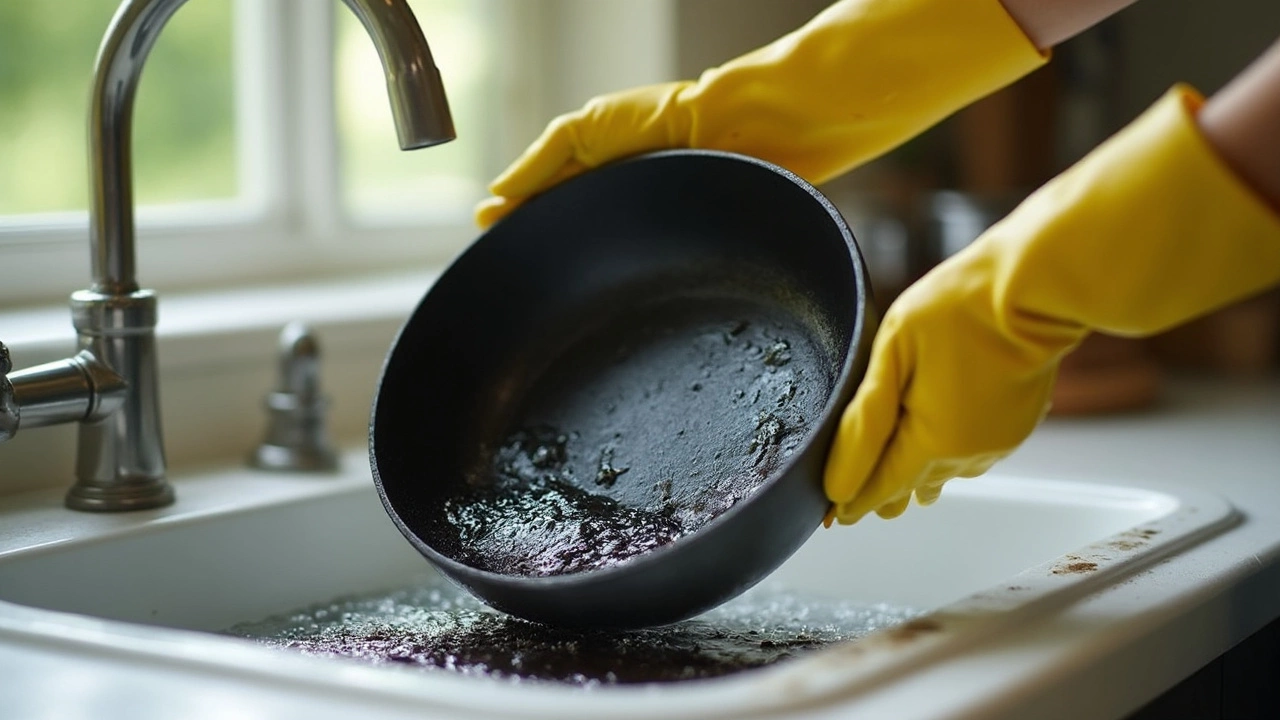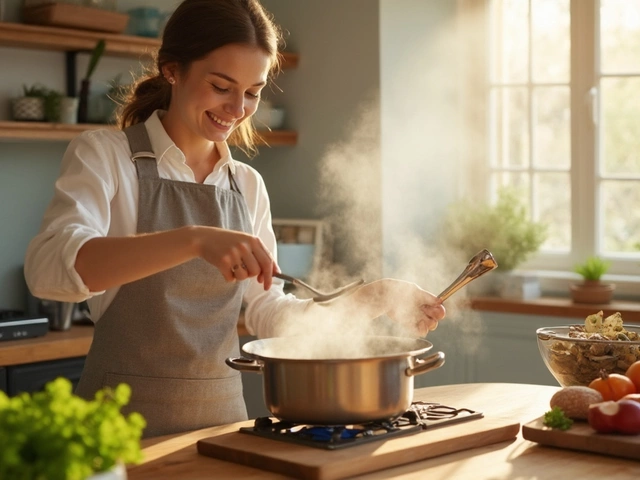How to Remove Pan Stains Quickly
If you’ve ever scrubbed a pan for ages and still see dark spots, you’re not alone. Stubborn stains don’t have to mean a new pan. With a few kitchen staples and the right technique, you can bring back that shiny look in minutes.
Why Stains Form and What to Avoid
Most pan stains are caused by burnt food, heat buildup, or mineral deposits from water. Using high heat on empty pans or letting food sit too long can create a layer that looks like a permanent mark. The worst mistake is using abrasive cleaners that scratch the surface, making future stains stick even more.
Everyday Solutions for Different Stains
Baking soda paste: Mix a tablespoon of baking soda with enough water to form a thick paste. Spread it over the stain, let it sit for 15 minutes, then scrub gently with a non‑scratch sponge. Rinse and dry – the stain should lift.
Vinegar soak: Fill the pan with enough white vinegar to cover the stained area and heat it on low for a few minutes. The acidity loosens burnt residue. After cooling, wipe with a soft cloth and wash as usual.
Salt and oil method: For a seasoned cast‑iron pan, sprinkle coarse salt over the stain, add a drizzle of cooking oil, and scrub with a paper towel. The salt acts as a mild abrasive without damaging the seasoning.
Lemon power: Cut a lemon in half, rub the cut side directly on the stain, and let the juice sit for 10 minutes. The natural acids break down discoloration. Rinse well to avoid any lingering citrus taste.
If the stain is really tough, combine methods: start with a vinegar soak, then apply the baking soda paste, and finish with a quick lemon rub. The layered approach tackles the residue from different angles.
Always rinse the pan thoroughly after any cleaning solution. Leftover soap or acid can affect the flavor of future dishes. Dry the pan completely with a clean towel to prevent new water spots.
For non‑stick pans, skip abrasive tools completely. Use a soft sponge and a mild dish soap, then try the vinegar soak if needed. Avoid metal scrubbers, as they can wear down the coating over time.
Regular maintenance makes stain removal easier. After each use, wipe the pan with a damp cloth while it’s still warm, and do a quick soap‑free rinse. A light oil coat on steel or cast‑iron surfaces also creates a barrier against food sticking.
In a pinch, you can use a commercial cleaner designed for cookware, but many people find kitchen staples work just as well and cost less. The key is to act sooner rather than later; fresh stains are far easier to eat away than baked‑on tar.
Give these tricks a go the next time a pan looks grimy. You’ll save money, keep your cookware in good shape, and spend less time scrubbing. Happy cooking!

Black Stuff on Pan Bottoms: What It Is and How to Deal With It
Ever turn over a pan and find a stubborn black layer clinging to the bottom? This isn't just burnt food—it's a mix of carbonized grease, oils, and sometimes even chemical reactions from cooking. That black stuff can mess with your food flavor and even shorten the life of your cookware if ignored. This article breaks down what causes it, how it builds up, and most importantly, how to get rid of it. Say goodbye to scrubbing frustration and hello to pans that last longer.
Categories
- Storage (27)
- Bathroom (18)
- Sofas (15)
- Curtains (15)
- Home Decor (12)
- Bedding (11)
- Kitchenware (11)
- Cushions (11)
- Mirrors (10)
- Rugs (9)
Popular Articles



